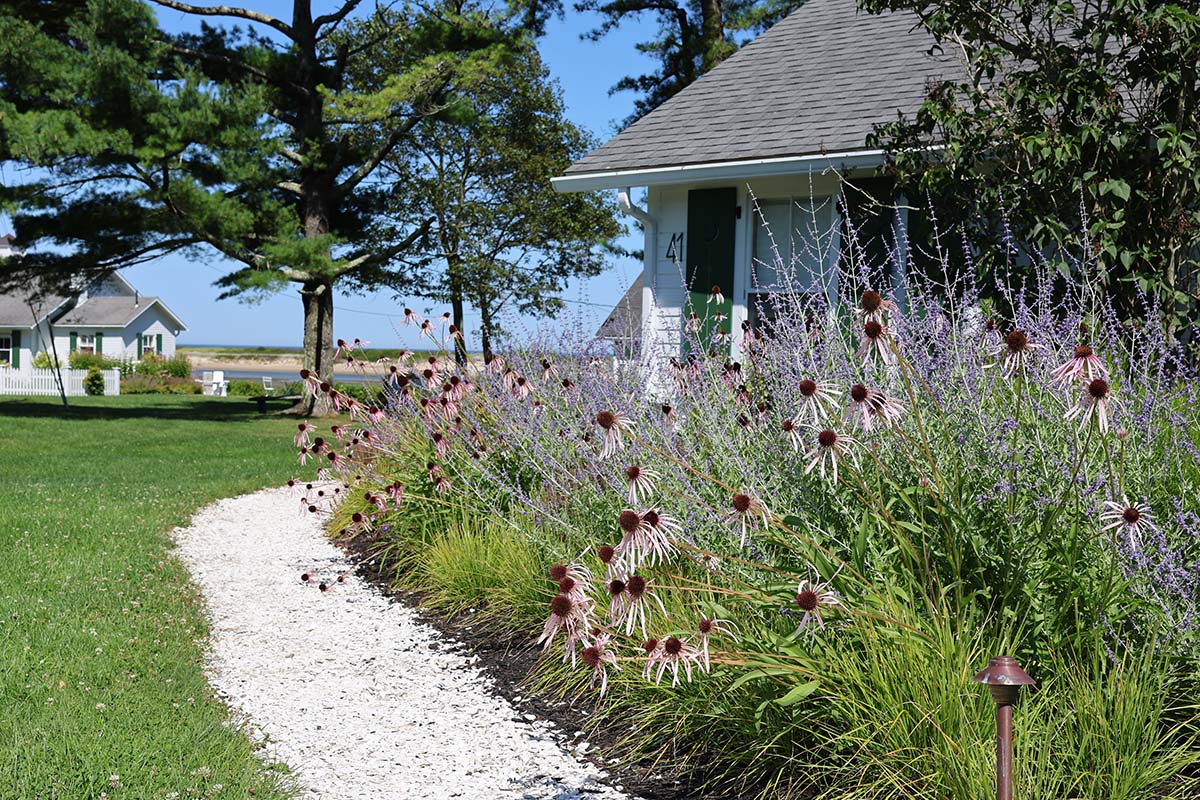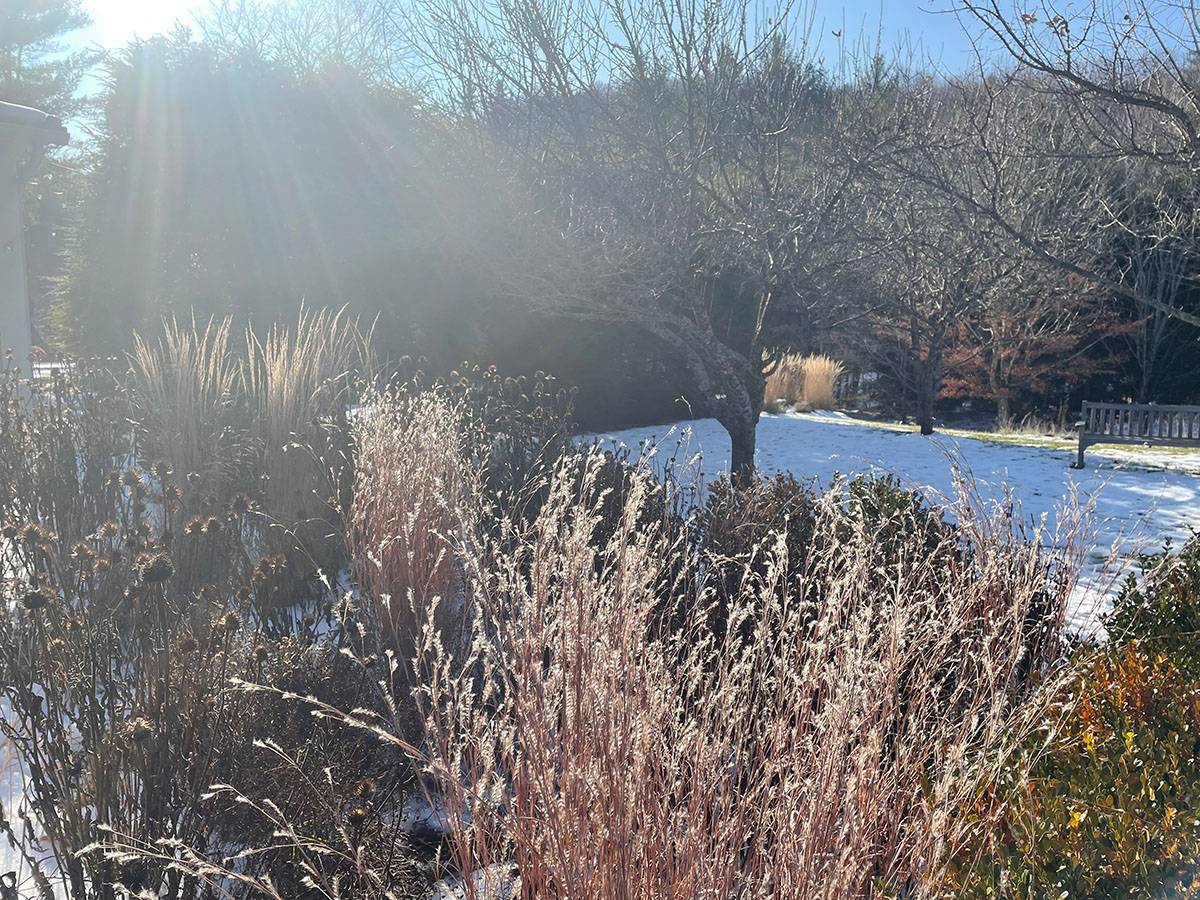
Field Notes: Gavin Boyce-Ratliff of GBR Landscape Design
Maine Landscape Designer Gavin Boyce-Ratliff on meadow dynamics, resilient plant communities, and the beauty of working with living landscapes.
On the coast of Maine, where spruce woods meet long-used pastureland, Landscape Designer Gavin Boyce-Ratliff is shaping meadows that honor both history and place. Through his practice, GBR Landscape Design, he works across the Northeast to create herbaceous landscapes grounded in ecology, craftsmanship, and a clear respect for how meadows actually come into being.
Gavin’s perspective was formed by a life spent in grasslands—from the working fields of New England to the wide prairies of the Mountain West. Those experiences inform his belief that most Eastern meadows are deliberate landscapes, shaped by grazing, clearing, fire, or ongoing management rather than chance. His plantings blend warm-season native grasses, forbs and some favorite non-natives that add contrast, texture, and seasonal movement.
In this edition of Field Notes, where we speak with designers and practitioners about the evolving role of meadows in contemporary landscapes, Gavin reflects on his enduring love of open spaces, the nuanced dynamics that define meadow systems, and how thoughtful, long-term stewardship can help these landscapes reach their full ecological and aesthetic potential.


What first drew you to meadows—and how has your relationship with them evolved over time?

I grew up in New England, and my early exposure to "meadows" was primarily through working pastures. Grazing livestock landscapes. But I think it was in my time living in the Mountain West that I really fell in love with open landscapes. Large, treeless prairies and meadows have always been a love of mine. Moving back to New England and falling in love with its ecology later on has increased my appreciation for forests, and woodland edges—but grass-dominated meadows are still my favorite landscape to spend time in.

What do you wish more people understood about how meadows actually work?
Something I always try to emphasize is that the term meadow is incredibly nuanced and varied. In the Midwest, there are prairies that are in a state of stasis, meaning they will remain grass-heavy prairies without fires, and grazing, and mowing. But in most places, meadows are an intentional act and a landscape we have created—whether through grazing animals, or clearing for agriculture, or fire. They require our involvement, or else many of these spaces will continue on in the successional process and grow trees and woody plants and ultimately reforest. So it's rarely a case of sowing seeds and walking away; meadows require management.
Also, in the same vein, there is no one-size-fits-all for what a meadow should look like or what species are present. We can create a space that behaves like a meadow that's planted entirely with container plants and has more intentional species composition. We can also create a meadow by just mowing an area and letting things grow up that want to be there.

That said, especially here in New England, I think it's important to think about meadows in their historical context and recognize that they were generally places to grow food or raise livestock. And so whatever seed mix or style we go for, we do have an innate (subconscious) understanding of what a meadow should look like, and it should harken back to a space that is utilitarian at its root, even if it's purely for aesthetics now or for wildlife and pollinators.

What are the few select plants you find yourself returning to again and again—and what makes them indispensable in your eyes?

I am in love with Amsonia hubrichtii, whether in a garden or a larger meadow. It provides a very grass-like texture and feel in a naturalistic garden, paired with excellent fall foliage.
I also really enjoy meadows that are full of little bluestem (Schizachyrium scoparium) and Panicum virgatum. Late summer into winter is pretty unbeatable with these warm-season grasses showing off.
But I'm also not a purist, and enjoy incorporating some plants not 'native' to our region that provide some interest and color. I love a river of Salvia, or Sesleria, or Echinacea running through a meadow matrix.

Can you recall a field experience that shifted your perspective on ecological relationships or plant dynamics?
The most obvious memory is the first time I saw birds building a nest in a tree I planted. I was working on a landscape crew in Montana, and we were working on a multi-year project revegetating a riparian corridor on a ranch in southwestern Montana. I was in and out of skid steers and excavators, and setting up temporary nursery beds for the thousands of trees we were planting, and I remember walking back through a stand of willows we planted that morning and seeing a bird perched in a newly planted tree. So simple and obvious, but it imbued so much value into the work for me and changed my outlook early on.

If you could stage a meadow in an unexpected setting—urban, industrial, or otherwise unconventional—where would you put it and why?
It's already being done, but I find reclamation projects of abandoned or unused urban lots so powerful. Left alone, plants will grow out of the cracks in concrete and find a way. A dream project would be to work on an old quarry site—where the topography and landscape are entirely manipulated and unlike anything found in a natural setting, and fill it with meadows. I just love areas of disturbance and the way plants can make the bleariest of landscapes come alive.
To explore Gavin Boyce-Ratliff's work and get in touch, visit his website at www.gbrlandscape.com.




